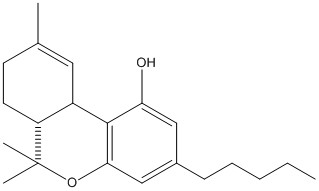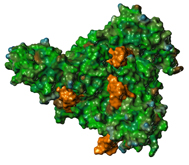Kotra Research Group
Projects
Our research group is interested in understanding drug targets, three-dimensional structures of enzymes and receptors, designing molecular intervention strategies, synthetic medicinal chemistry, and development/implementation of biochemical and cellular assays, and animal disease models. Our group collaborates with teams in Toronto and elsewhere to engage in translational research. Please see Publications section for latest publications from our group.
Discoveries and Accomplishments
Due to the strategic location of the laboratory in the Toronto Discovery District at MaRS Center, we are privileged to engage in several collaborative research projects expanding the depth and breadth of our research projects focusing in medicinal chemistry.
Our goal is to make a long lasting impact on translational research and on the lives of patients through better pharmaceutical care. Our discoveries of antimalarial drugs and drugs targeting diabetic neuropathy are being actively developed now as spin-off ventures (WinSanTor Inc. and CIDAVA Innovations Inc.) for potential therapeutic applications.
Research Projects
Active research projects in our laboratory include:
- Extraction of medicinal plants and investigations on chemical components (medical cannabis)
- Drugs targeting neurodegenerative conditions, such as multiple sclerosis, diabetic neuropathy
- Inhibitors targeting thrombocytopenia (ITP and related blood disorders)
- Novel classes of antimalarial agents (ODCase inhibitors, falcipain-2 inhibitors)
- Broad-spectrum antiviral agents (Interferon-alpha mimetics)
- Drug delivery: small to medium-size proteins and complex natural product extracts
These projects have direct therapeutic applications in the areas of neuropathic pain, infectious diseases such as malaria, SARS and other RNA viral diseases, hypercholesterolemia, diabetes complications, idiopathic thrombocytopenic purpura (ITP), and multiple sclerosis. Following are a sample of projects.

Extraction and investigations on medical cannabis
We have a keen interest in understanding the phytocannabinoids in various medical cannabis strains, their potential biological effects, relevance to several therapeutic claims, and investigate them in vitro and in vivo models of the diseases. In this context, our research group is actively engaged in the isolation and profiling of chemicals from various sources of medical cannabis. Ultimate goal is to dissect the potential pharmaceutical values from this potentially valuable medicinal plant and objectively evaluate its value in various clinical applications.
Novel classes of antimalarial agents
We have a keen interest in developing novel chemical classes of antimalarial agents, especially tacking the drug resistant forms of malaria.
For the first time, we disclosed the ability of ODCase to catalyze pseudo-hydrolysis, possibly via induction of an electrophilic transition state species using an inhibitor, 6-cyano-UMP (JACS, 2005). We also discovered that 6-iodoUMP is a covalent inhibitor of ODCase—first covalent inhibitor described for this enzyme (J. Med. Chem. 2007). We showed that 6-iodouridine (Kopakamal) is a potent inhibitor of drug-resistant Plasmodium falciparum, exhibits in vivo efficacy in mice and a potential for combination therapy (J. Med. Chem. 2013). This molecule is currently under preclinical development. This is a collaborative project with a number of leading research groups in Canada and elsewhere, including Drs. Emil Pai, Kevin Kain, Ian Crandall and Ping Lee.
In collaboration with several groups in Canada and India, our research group is also investigating novel chemical classes of antimalarial agents including those targeting ODCase and other important targets such as falcipain-2 in the malaria parasite. Majority of this work has been carried out as a part of the Consortium for the Development of Novel Classes of Antimalarials supported by ISTPCanada and Department of Biotechnology, Govt. of India.
Interferon mimetics as broad-spectrum antiviral agents

Interferons are a unique class of proteins that are produced in our body as a part of a family of cytokines, that elicit antiviral response irrespective of the virus causing the infection. In fact, interferon is used as a therapeutic in a number of chronic viral infections such as hepatitis C, and is effective in a number of infections such as SARS, influenza etc.
Our group is involved in understanding the interactions of interferons at their corresponding receptors-in the context of protein-protein interactions and identify structural principles for the design of agonists of these receptors as potential mimics to interferons. This is a close collaboration with Eleanor Fish laboratory at University Health Network. Three-dimensional models of the complexes of interferon receptors and various interferon-a ligands are already in place (FASEB J. 2007, and J. Med. Chem. 2008, 2009). Using structure-based drug design and in silico screening tools, we investigate various chemical structures and libraries of compounds for the mimicry of protein-protein interactions of interferons at their receptor sites. Molecules of this nature (i.e. agonists for interferon receptors) can be used in place of interferons therapeutically eliminating a number of unwanted side effects or interferons. Additionally antagonists to interferon receptors will have applications in autoimmune diseases. We have recenlt identified small molecules that bind at the interferon receptor, and provide protection against viral infection, essentially paving the way for broad-spectrum antivirals, mimicking IFN!
Diabetic neuropathy
Diabetes is almost considered as a public health issue now, and related complications are a major issue for patients, especially those with juvenile diabetes. This is because by the time children/young adults reach middle age, a number of complications develop as a result of suffering from diabetes for most of their lives, affecting the quality of life. One such common complication is diabetic polyneuropathy. Patients with diabetes develop a condition of neuropathy where sensation in the limbs is lost, especially in the extremities due to the degenerated peripheral neurons. In collaboration with Dr. Paul Fernyhough and Dr. Nigel Calicut, we are engaged in developing novel therapeutics that would prevent and reverse the degeneration of neurons and provide relief from diabetic neuropathy. Successfully addressing this challenge would also transpire into effective medications for other neurological diseases.
Drug Delivery

Initiated as an industry-sponsored research project, Kotra group using unique expertise in conjugating various drugs of therapeutic interest to a variety of proteins or peptides for drug delivery purposes. Kotra group utilizes a variety of chemical tools to develop novel linking technologies and strategies that would serve the needs of each drug delivery vehicle, disease condition and adapt the protein-drug conjugate (PDC) optimally through modulating the chemistry. Protocols are being developed to link the cytotoxic drugs to the protein, estimate the loading efficiency, and conduct preclinical validation studies for scale up and animal studies.